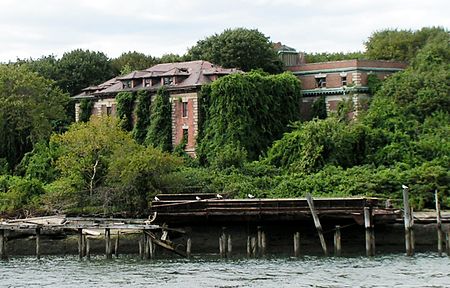North and South Brother Islands (New York City)

North and South Brother Islands are a pair of small islands located in New York City's East River between the mainland Bronx and Rikers Island. North Brother Island was once the site of the Riverside Hospital for quarantinable diseases but is now uninhabited. The islands had long been privately owned, but were purchased by the federal government in 2007 with some funding from The Trust for Public Land and others; both were given to the City. They were then designated as sanctuaries for water birds.According to the New York City Parks Department, which oversees the islands, North Brother Island has about 20 acres (8 hectares) of land, and South Brother Island about 6 acres (2.4 ha).Public access is prohibited but permission is occasionally given to researchers and journalists; a NYC Parks staff member escorts all such visitors.
Excerpt from the Wikipedia article North and South Brother Islands (New York City) (License: CC BY-SA 3.0, Authors, Images).North and South Brother Islands (New York City)
East 149th Street, New York The Bronx
Geographical coordinates (GPS) Address Nearby Places Show on map
Geographical coordinates (GPS)
| Latitude | Longitude |
|---|---|
| N 40.798266 ° | E -73.898424 ° |
Address
Light Tower
East 149th Street
10455 New York, The Bronx
New York, United States
Open on Google Maps







